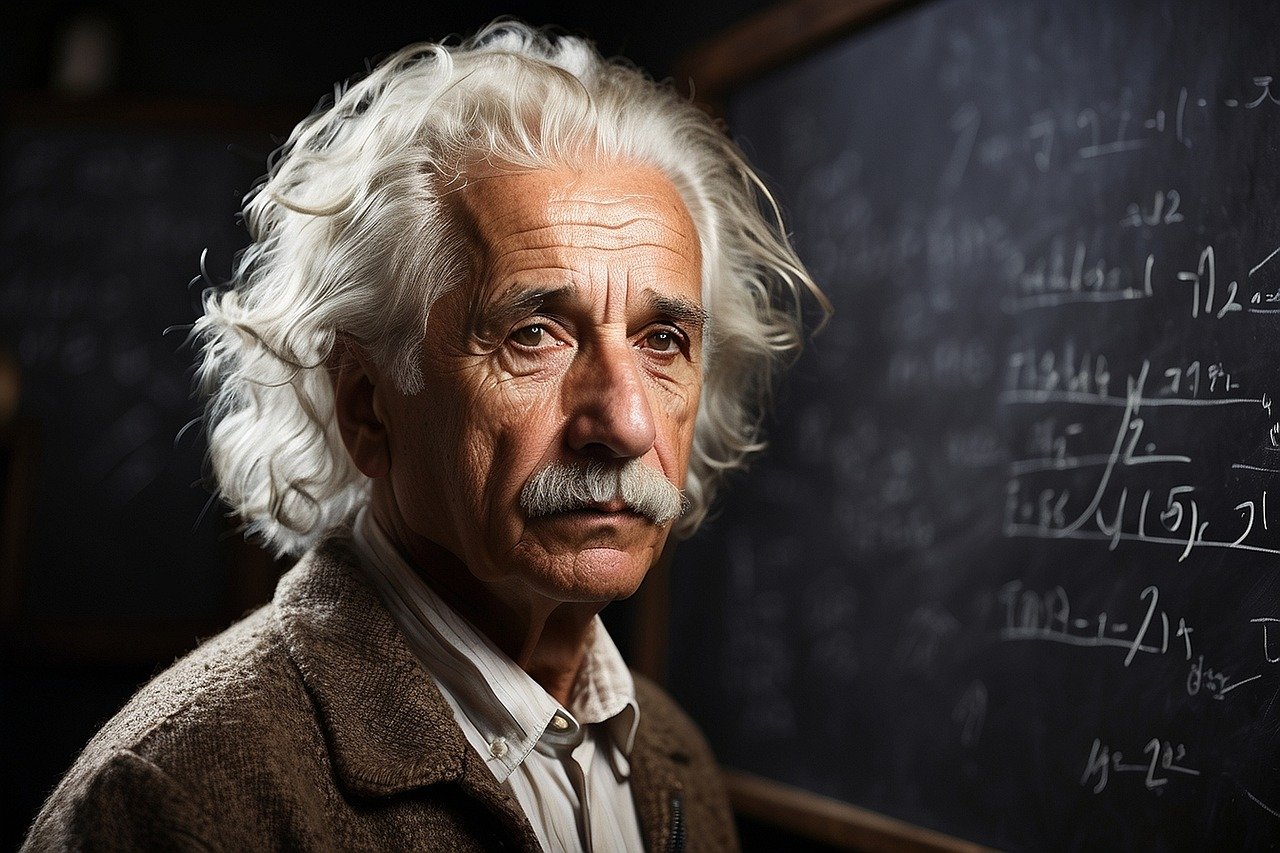Albert Einstein, a name synonymous with genius, revolutionized the way we understand the universe. His contributions to physics, from the theory of relativity to quantum mechanics, have had a profound impact on modern science. But who was the man behind the equations? This article delves into the life of Albert Einstein, exploring his early years, his groundbreaking theories, and the legacy he left behind.
Early Life and Childhood
Family Background
Albert Einstein was born on March 14, 1879, in Ulm, Germany, into a Jewish family. His father, Hermann Einstein, was an engineer and salesman. His mother, Pauline Koch, managed the household. Einstein had one sister, Maja, who was two years younger than him. From a young age, Einstein was curious about the world around him, a trait that would define his future endeavors.
Struggles in School
Einstein was not a poor student. However, he did struggle with the rigid educational system of his time. He disliked rote learning and the authoritarian teaching methods prevalent in German schools. Despite these challenges, his fascination with mathematics and science began to flourish, thanks in part to his uncle Jakob, who introduced him to algebra and geometry.
Education and Early Career
University Years
Einstein's formal education began at the Polytechnic in Zurich, Switzerland, where he studied physics and mathematics. Despite his brilliance, Einstein was not a model student. He often skipped classes, preferring to study on his own. His independent thinking paid off when he graduated in 1900, albeit with a less-than-stellar academic record.
Patent Office Employment
After graduation, Einstein struggled to find a teaching job, so he took a position at the Swiss Patent Office in Bern. While this job might seem unrelated to his future work, it provided Einstein with the time to think deeply about physics. It was during this period that he developed some of his most important theories, including the theory of special relativity.
Einstein’s Groundbreaking Theories
Theory of Special Relativity
In 1905, Einstein published his theory of special relativity, which revolutionized our understanding of space and time. The theory proposed that the laws of physics are the same for all non-accelerating observers, and it introduced the concept that the speed of light is constant, regardless of the observer's motion. This was a radical departure from the Newtonian mechanics that had dominated physics for centuries.
E=mc²: The Most Famous Equation
Perhaps the most famous result of Einstein’s theory of special relativity is the equation E=mc². This equation suggests that mass and energy are interchangeable; they are two sides of the same coin. The implications of this equation were enormous, leading to developments in nuclear energy and our understanding of the universe's energy balance.
General Theory of Relativity
Einstein didn’t stop at special relativity. In 1915, he published his general theory of relativity, which extended the principles of special relativity to include gravity. According to this theory, gravity is not a force between masses but a curvature of space-time caused by mass. This groundbreaking idea was confirmed during a solar eclipse in 1919, when light from distant stars was observed to bend around the sun, just as Einstein had predicted.

Later Life and Legacy
Move to the United States
As the political situation in Germany deteriorated in the 1930s, Einstein, who was of Jewish descent, decided to leave. In 1933, Einstein moved to the United States and took a position at the Institute for Advanced Study in Princeton, New Jersey. This move marked the beginning of the final chapter of his life, where he would continue his scientific work and become a prominent public figure.
Contribution to the Manhattan Project
Although Einstein was a pacifist, he played a significant role in the development of the atomic bomb. In 1939, he signed a letter to President Franklin D. Roosevelt, warning him that Nazi Germany might be working on nuclear weapons. This letter led to the establishment of the Manhattan Project, although Einstein himself did not work directly on the project.
Nobel Prize in Physics
Einstein’s contributions to physics were recognized in 1921 when he was awarded the Nobel Prize in Physics. Interestingly, he did not receive the prize for his work on relativity but for his explanation of the photoelectric effect, which was crucial in the development of quantum theory.
Personal Life
Marriages and Relationships
Einstein’s personal life was as complex as his theories. He married twice, first to Mileva Marić, a fellow physicist, with whom he had two sons, Hans Albert and Eduard. The marriage ended in divorce, and Einstein later married his cousin, Elsa Löwenthal. His relationships were often strained, but they also provided him with the support he needed to pursue his work.
Hobbies and Interests
Despite his busy life, Einstein had a range of hobbies. He was an avid violinist, often finding solace in music. He also enjoyed sailing and spent a great deal of time thinking while on the water. His love for simple pleasures reflected his belief in living a life of contemplation and curiosity.
Einstein’s Influence on Modern Science
Impact on Quantum Mechanics
Einstein’s work laid the foundation for much of modern physics, particularly in the field of quantum mechanics. Although he had reservations about some aspects of quantum theory, his contributions to the field, especially his work on the photoelectric effect, were pivotal.
Philosophy of Science
Einstein was not just a physicist; he was also a philosopher of science. He believed in the power of simplicity and elegance in scientific theories, often stating that "God does not play dice with the universe." His philosophical views continue to influence the way scientists approach the mysteries of the cosmos.